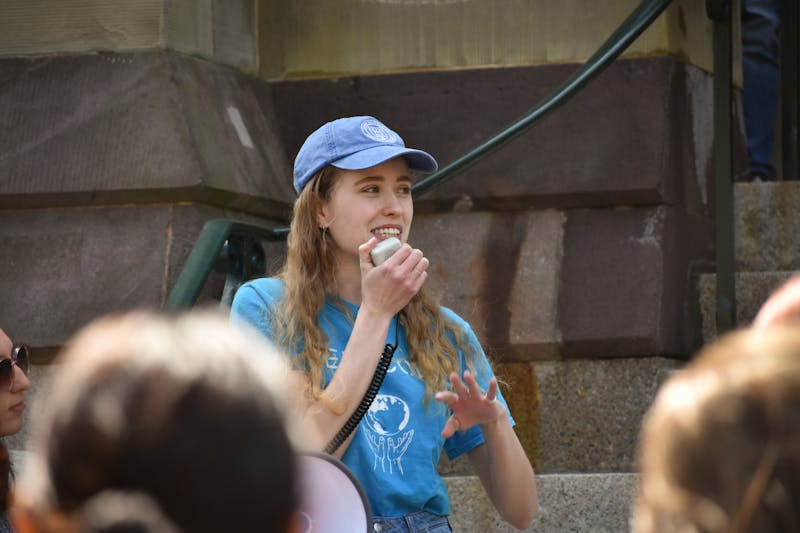
Emily Mok's senior design project -- which exposes imaginary New Yorkers to smallpox and tracks the spread of the disease across a pixelated Manhattan -- has attracted faculty and resources from Penn's Institute for Strategic Threat Analysis and Response.
Launched in 2001 as a response to 9/11, ISTAR brings together faculty and students from diverse departments to engage in counter-terror research and policy recommendation.
Mok, an Engineering senior and first-year submatriculation student in the Fels Institute of Government, conducts her research under an umbrella of ISTAR vaccine-modeling projects with implications for fighting bioterrorism.
The computer simulation that Mok is developing not only models smallpox outbreak patterns but also the effects of vaccination. It tracks the effectiveness of small- and large-scale vaccination before and after outbreak, serving as a potential tool for health policy-makers.
What distinguishes Mok's project from previous simulations of bioterror weapons outbreaks is her attempt to model social networks onto geographic data. Instead of relying on the probability of "chance encounters" in spreading the disease, she spatially represents human interaction.
Mok said that "the real key thing is the social-spatial structure we built into the model," which is overlaid onto Geographic Information Systems maps.
Her model also takes into account biological factors of smallpox such as infectiousness during different stages of the disease.
Harvey Rubin -- ISTAR director and associate dean for student affairs in the School of Medicine -- heads the vaccine-modeling projects. School of Engineering professor Michael Kearns and Wharton professor Howard Kunreuther are also heavily involved.
"The limitation of the modeling is, of course, that we're creating the model," Rubin said.
"We don't really know the social networking, even in your own dorm," he continued.
However, Rubin expressed confidence in Mok and optimism about her project.
"She's very bright, and she deserves all the credit," he said.
He added that Washington policy-makers are very interested in this type of research, and that the ISTAR team has plans to publish a paper soon.
Mok started work on the modeling project -- titled "Smallpox Bioterrorism Vaccination Policy Decision Analysis Using Computer Modeling and Simulation" -- early during the fall semester when she approached Rubin with a request for him to be her adviser.
She was invited to take part in the ISTAR vaccine modeling project, which involves several other researchers.
While Mok focuses on modeling possible scenarios for smallpox outbreak and control, fellow researcher Josh Metlay -- an assistant professor of Medicine and Epidemiology -- collects empirical data on the historical spread of pneumonia.
The projects complement each other, with Metlay providing an empirical basis for Mok's predictive model.
Mok believes that her analysis of what control techniques work best will be useful in fighting other real-life epidemics.
"There's a lot of unknown diseases out there, like [Severe Acute Respiratory Syndrome], so simulation is a really powerful tool" in the absence of available historical data, she said.
In addition to vaccine modeling research, ISTAR involves faculty from all 12 schools in the University in enhancing regional preparedness for terrorist attacks, conducting airline security simulations and planning Iraq's recovery.
The Daily Pennsylvanian is an independent, student-run newspaper. Please consider making a donation to support the coverage that shapes the University. Your generosity ensures a future of strong journalism at Penn.
DonatePlease note All comments are eligible for publication in The Daily Pennsylvanian.







